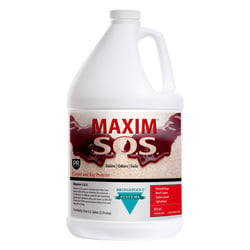One pizza company used the effective branding statement, “Better Ingredients Makes Better Pizza”. This statement holds true to making better cleaning solutions. Just like there are grades of cheese, pepperoni, sauce, etc., there are grades of raw materials used in making cleaning solutions.
The different grades of d’limonene are among the more obvious to the cleaner. Distillates, technical grade, and food-grade are distinguished by the consistency of the fragrance. The odor of a poor distillate will not easily be forgotten.
The amount of the ingredient used in any formula matters. However, we need to go beyond the quality and amount of the ingredient and also find special ingredients with core performance features that improve cleaning results. It is important to properly select ingredients that highlight a core feature that creates unique cleaning solutions and provides consistent results.
Each blog in this series will focus on a different feature brought about by a distinctive raw material based on performance and not cost. We will show pictures and/or short videos that visually illustrate performance from adding this raw material that by itself is uniquely responsible for that aspect of the result. The art of the formulator is in the selection of quality, innovative raws with features that produce reliable results for each application.
It starts and ends with the science of cleaning.
Protectors for Nylon and Wool
Nylon and wool carpets are prone to staining as these fibers have open dye sites.
I first learned about this when I was picking up a large rug from a mansion in Virginia. The rug in question was placed in a bedroom and a large portion of the rug was covered by the bed.
I thought it a shame to hide a beautiful rug under a bed. Once I removed the rug the reason was obvious. The bed was hiding a visible bad stain. No one had been able to remove the stain so they rescued the rug by putting it in a bedroom where the stain would not be visible under the bed.
I recognized the need for stain protection was crystal clear from that point forward. I did not know that I would be involved with an organization that would provide a product that would go far to solve that problem.

A protector for nylon and wool carpets should primarily provide stain resistance. The stain resistance or release comes from the use of an anionic acid dye resistor, which essentially is a colorless dye that fills vacant dye sites.
This limits the number of dye sites that can be filled by staining material. Protectors with acid-dye resistors will sometimes add fluorochemical which also provides soil resistance and oil repellency at fiber level for nylon and wool. The presence of acid dye resistors prevents water repellency and surface oil repellency even when a fluorochemical is added. We do make formulas without fluorochemical which provide no oil repellency.
The most important performance feature of nylon and wool is stain resistance.
*The following video shows how nylon carpets treated with an acid dye resistor and one untreated respond to the removal of a synthetic red dye. Water alone will rinse out the synthetic red dye from the treated nylon carpet sample but will not remove the synthetic red dye from the untreated nylon carpet sample.*
We have two different acid-dye resistors in our arsenal that perform this function. Our primary choice has better performance characteristics than our second choice. We use the second choice when we want to add more soil resistance and anti-wicking properties.
Education beyond blogs
Hands-on Rug Cleaning Aramsco/ Interlink Supply Training Schedule (cvent.com)
Featured Products

Bridgepoint Systems, Carpet Protector, Maxim Advanced, 1 Gallon
 Bridgepoint Systems, Carpet Protector, Maxim S.O.S. Stain, Odor, & Soil, 1 Gallon
Bridgepoint Systems, Carpet Protector, Maxim S.O.S. Stain, Odor, & Soil, 1 Gallon

Bridgepoint Systems, Carpet Protector, Encapuguard Green, 1 Gallon
